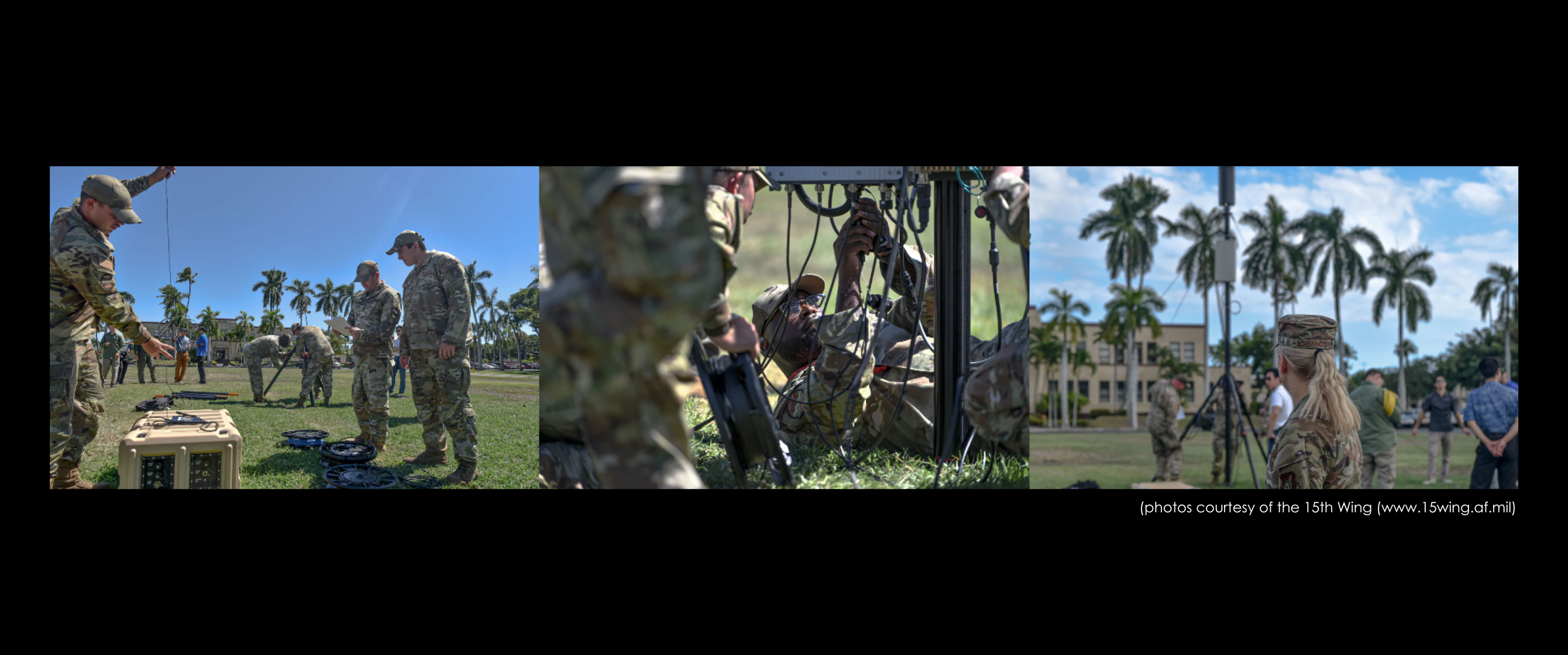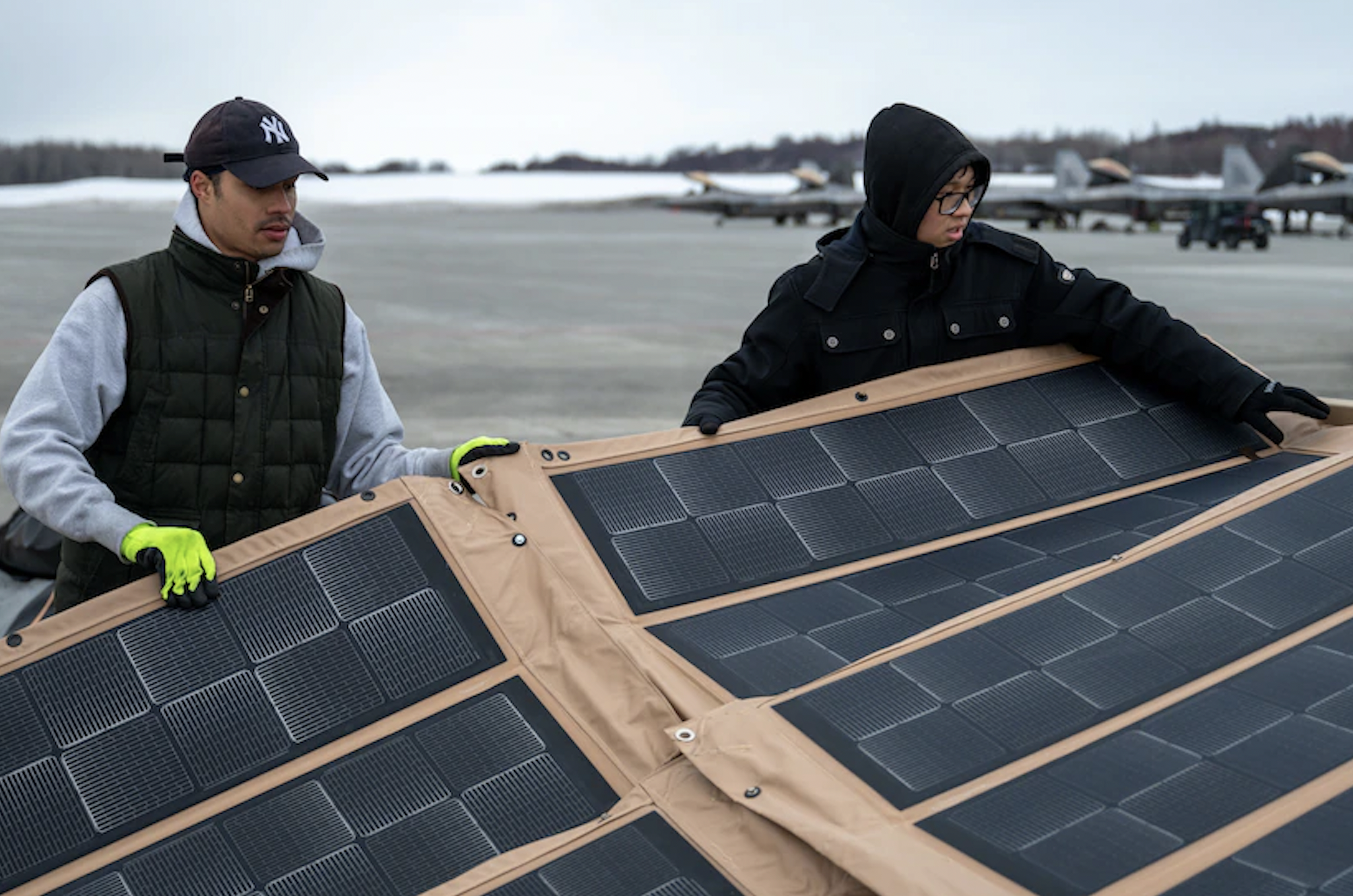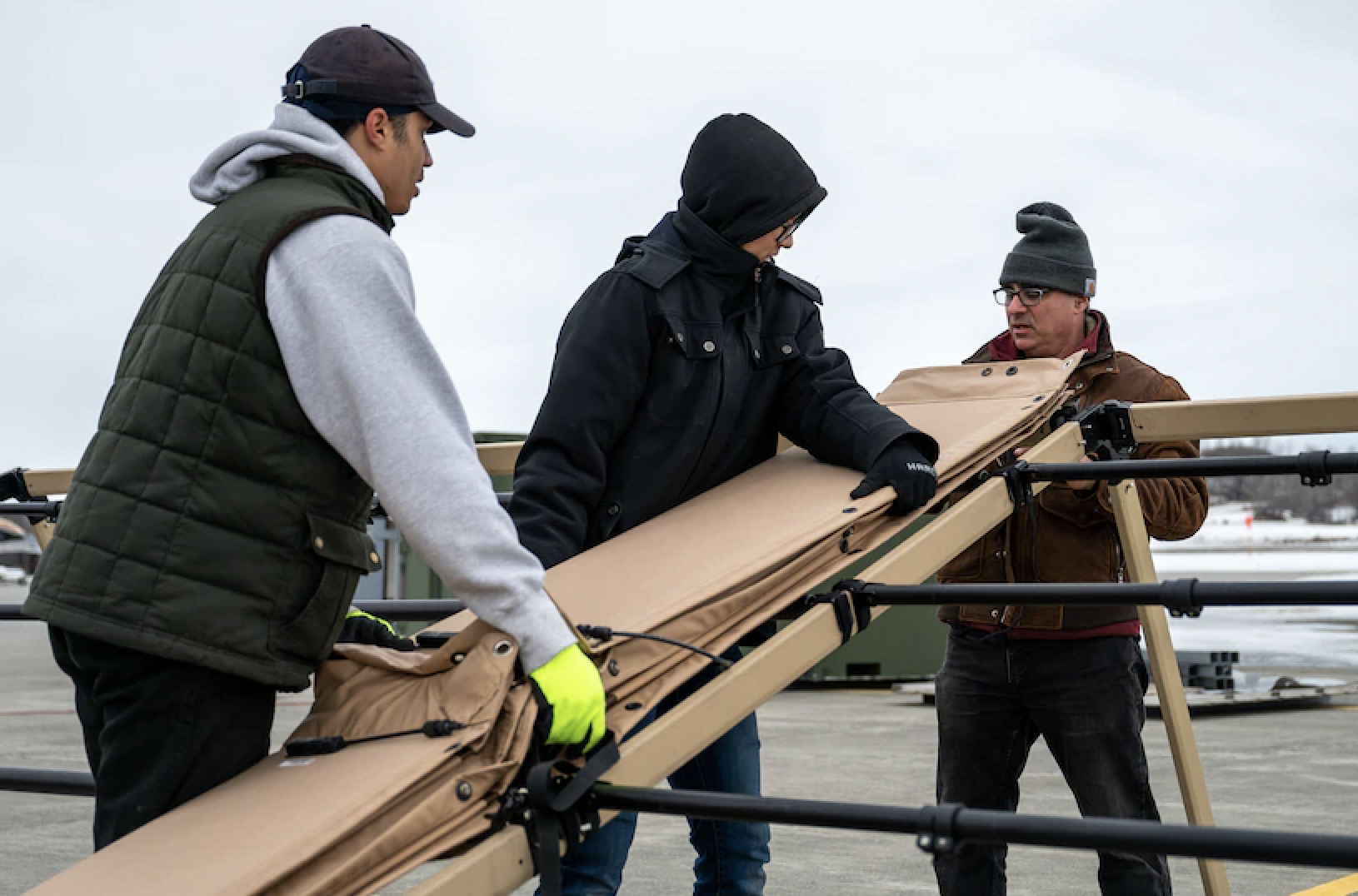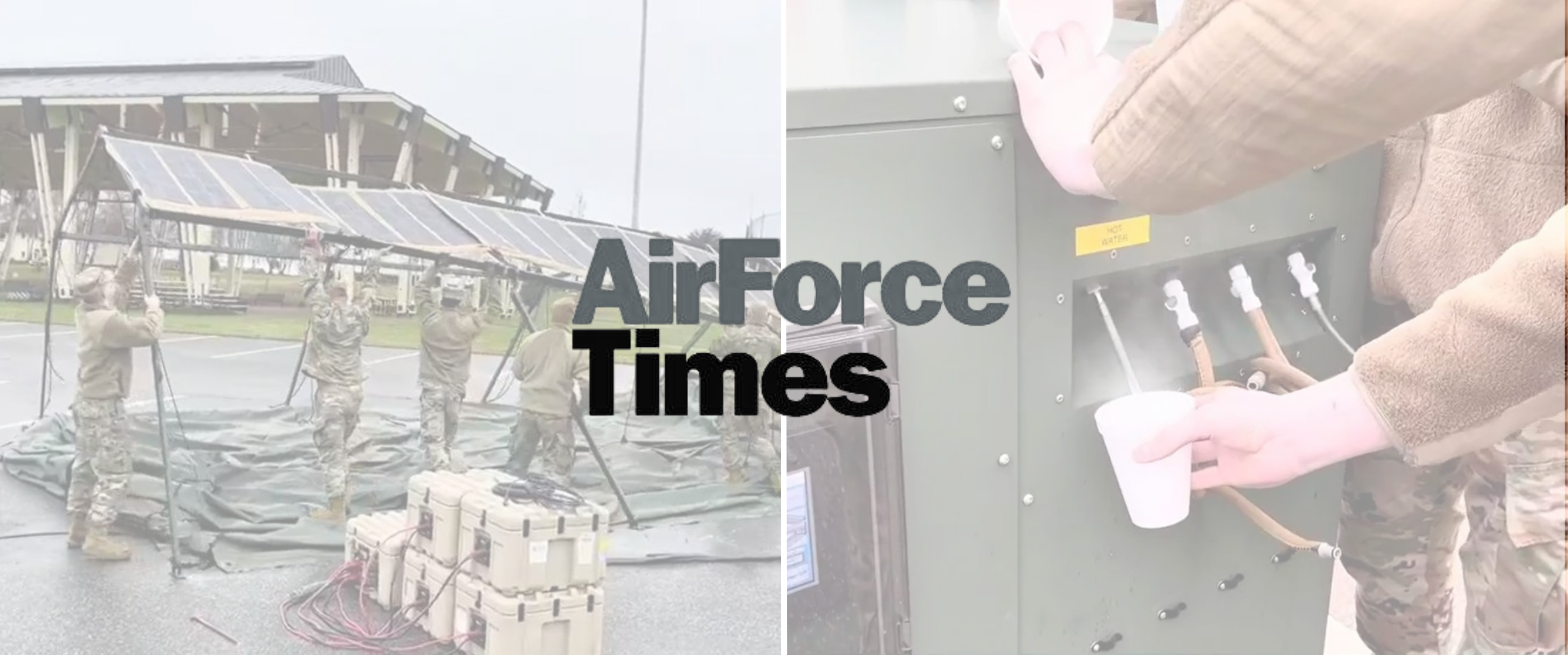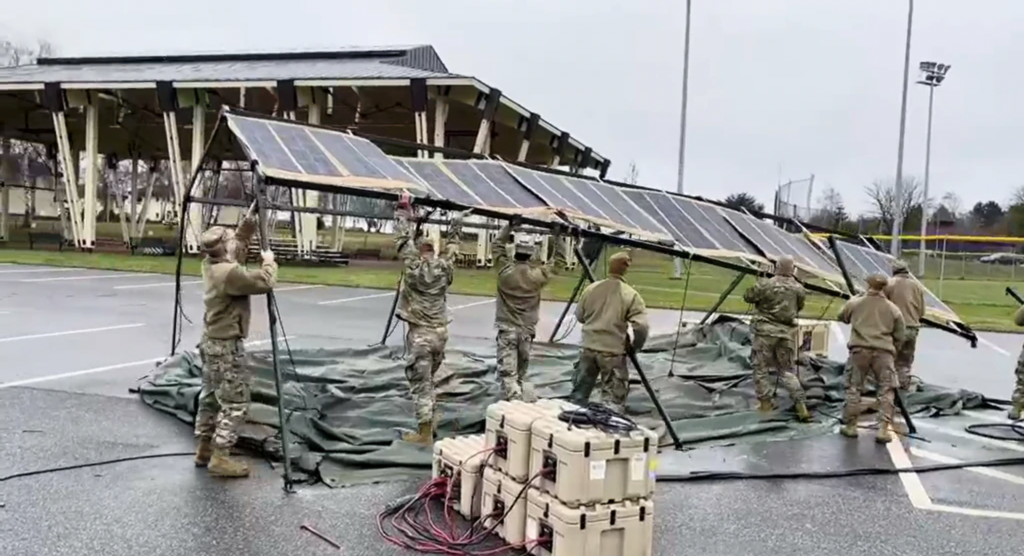15th Wing | Oct. 26, 2022 | By Tech. Sgt. Anthony Nelson Jr.
JOINT BASE PEARL HARBOR-HICKAM, Hawaii —
Airmen from the 15th Wing innovation cell, Aloha Spark, host an innovation demonstration, highlighting emerging technologies at Joint Base Pearl Harbor-Hickam, Hawaii.
The demonstration allowed leaders to see a real-time application in cross-capability technologies such as the portable operations network integrator and the solar powered expeditionary tent system.
“The 15th Wing and AFWERX (a Technology Directorate of the Air Force Research Laboratory (AFRL) leadership understand and emphasize the importance of working quickly in the Indo-Pacific theatre. Our accelerate change or lose model gives us a forward-edge approach by combining capabilities and teaming innovative technology with warfighters,” said U.S. Air Force Capt. Bryan Anderson, 15th Wing innovation chief.

Aloha Spark’s construct enables the innovation cell to be a pathway for collaboration and integration between the warfighter and the AFWERX network.
“When we look at the innovation ecosystem, often the technologies we need already exist. Aloha Spark saw a variety of technological solutions that we could integrate with for real-world operations,” Anderson said.
The demonstration showed technological solutions for the warfighter but further revealed the adaptability of multi-capable Airmen and their ability to bring agile combat employment principles to the frontline.

Airmen from the 15th Aircraft Maintenance Squadron received training from the Naval Information Warfare Center on the PONi system as part of the demonstration. These Airmen consist of several Air Force specialty codes that include; flying crew chiefs, crew chiefs, hydraulic systems specialists, maintenance production, and aircraft electrical and environmental systems specialists.
“The PONi rapidly increases our range with inbound and outbound aircraft. The communication capabilities are not just radio but 5G internet capabilities, communication with aircraft and electronic devices,” said Staff Sgt. Seth Scott, 15th Aircraft Maintenance Squadron crew chief.

Scott added that receiving the training on the PONi system gives MCA’s the confidence needed to implement new capabilities while decreasing their footprint in an austere environment.
The SPETS system was also demonstrated. It provides the versatility needed for multipurpose usage in various environments. According to the Air Force Rapid Global Mobility office, SPETS has the ability to retrofit to meet the needs of commanders and contingencies such as personnel lodging, command center, storage facility, medical staging area, and more in various locations.
“SPETS and PONi allow MCA’s to disperse and set up a resilient and mobile command center that will give commanders quicker access to information and communication efforts while in various locations to meet the need for the future fight,” Lt. Col. Karman Khalidi, 15th Maintenance Group deputy commander.

The MCA concepts focus on teaching skill sets outside of one’s respective career field. For Staff Sgt. Dan Kosty, 15th Maintenance Squadron crew chief, this demonstration offered an opportunity to incorporate 3D printing skills acquired while assigned to Aloha Spark and show practical cross-utilization inside the SPETS.
“Having the capability to generate our energy with SPETS away from a main operating base gives us the advantage. A system like this, tethered with current technologies such as 3-D printing will allow Airmen to produce specialized applicable and agile tools for any airframe and weapons system within our forward operating region,” said Kosty.
The U.S. Air Force defines agile combat employment as a way of operating that relies less on large traditional main overseas bases as hubs for projecting combat power and more on launching, recovering, and maintaining aircraft from dispersed forwarded operating locations in concert with allies and partners.

“Demonstrations like these are great conversation starters that allow us to ask the question; how might we strengthen ACE capabilities locally?” Anderson said. “The demonstration also validated the need to further implement our multi-capable Airmen into strategies that allow us to continue ensuring our ability to maintain peace, stability and security in the Indo-Pacific.”
Click here to read the original article.
